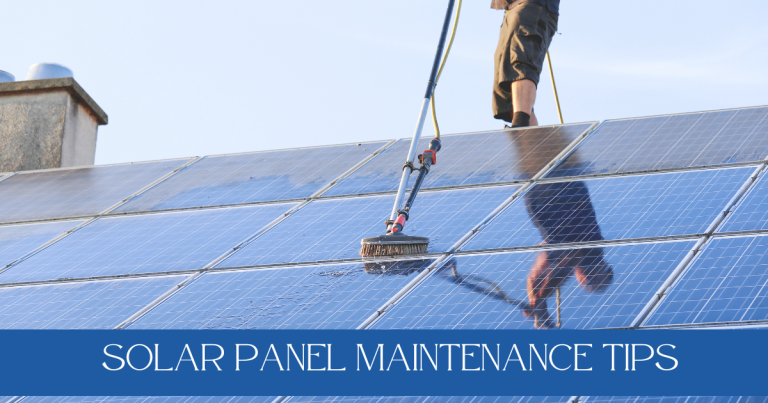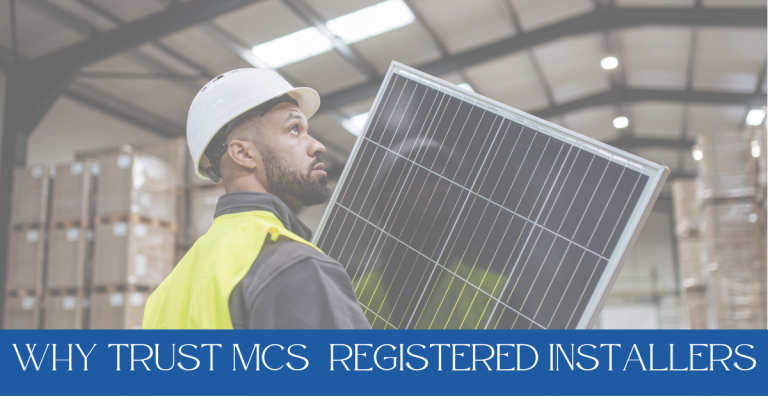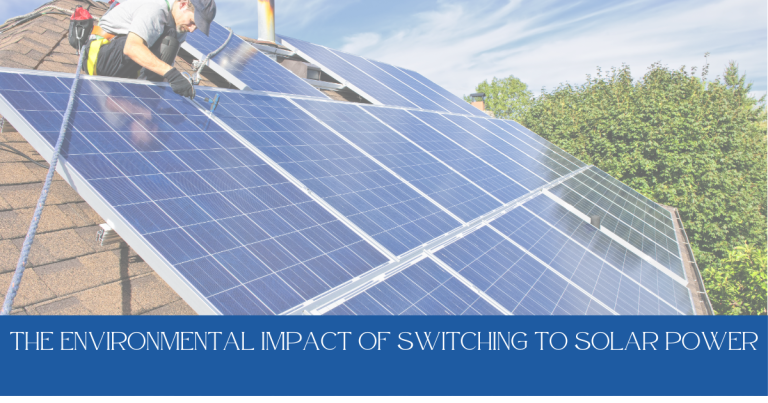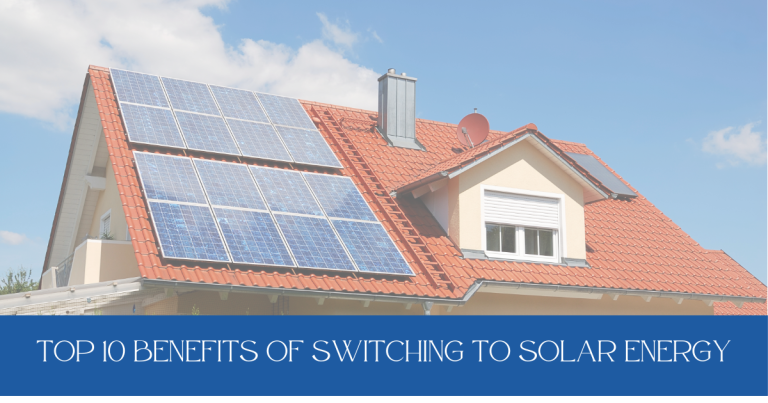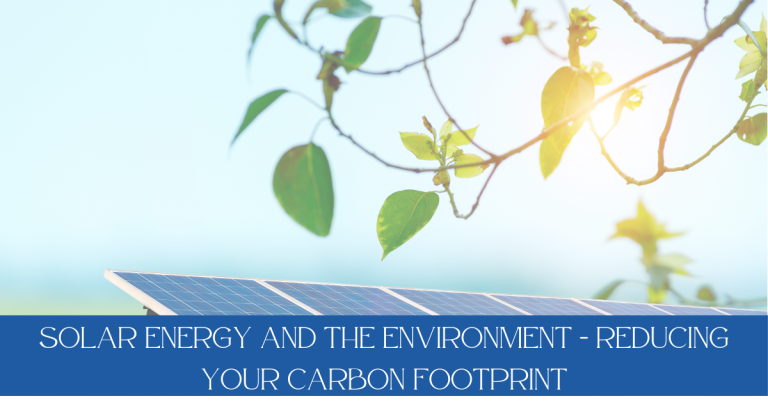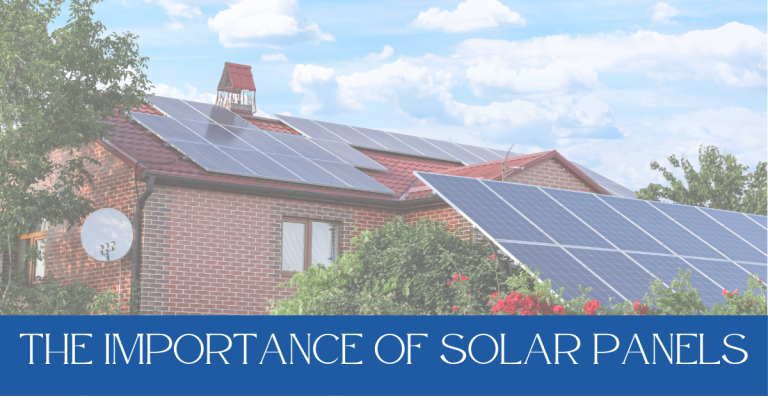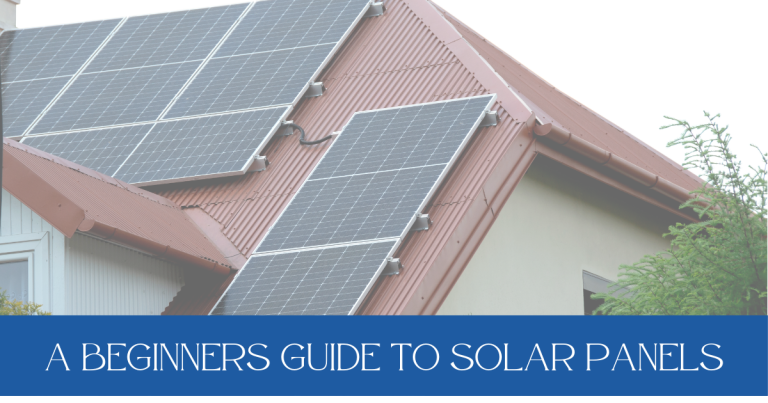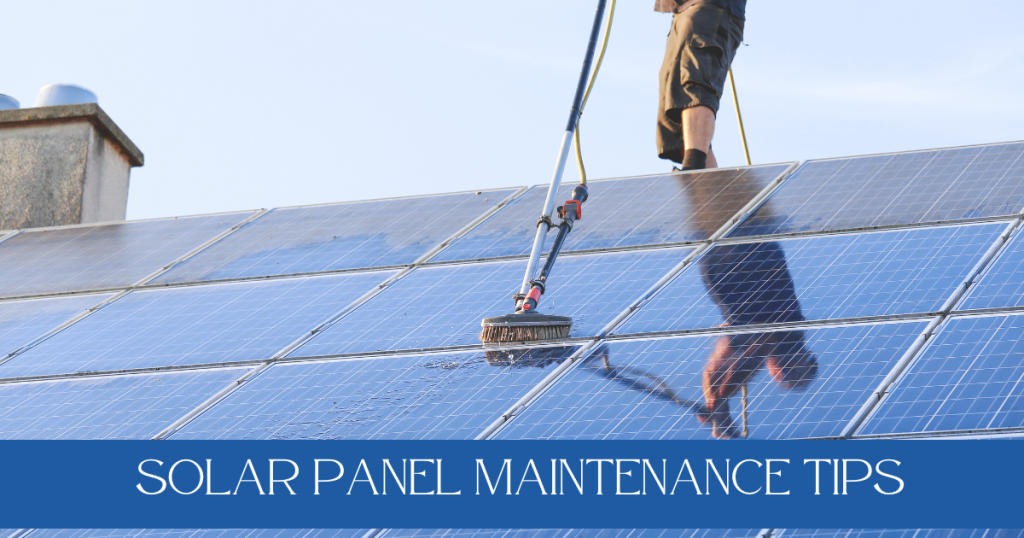
Solar panel maintenance: Tips to keep your system running efficiently.
Solar panels are a fantastic investment that not only help you save on energy bills but also reduce your carbon footprint. However, like any other investment, proper care and maintenance are essential to ensure your solar system continues to operate at peak performance.
In this blog, we’ll cover practical tips for maintaining your solar panels, including cleaning, monitoring energy output, and scheduling professional checkups.
1.Regular Cleaning: Keep your panels clear of debris.
Dust, dirt, bird droppings, and leaves can accumulate on your solar panels over time, reducing their efficiency. Solar panels rely on sunlight, so any obstruction can impact how much energy they produce. Regular cleaning can help you maximise your system’s energy output.
Cleaning Tips:
- Frequency: Clean your panels at least twice a year, or more frequently if you live in a particularly dusty or high-pollen area.
- Best Time: Clean your panels in the early morning or late afternoon when they are cool to the touch. Cleaning them while they are hot can cause the cleaning solution to evaporate too quickly, leaving streaks.
- Method: Use a soft cloth or sponge with water and mild soap. Avoid using abrasive materials or harsh chemicals, as these can damage the surface of the panels. A long-handled squeegee can also be useful for reaching higher panels without needing a ladder.
- Rainfall consideration: In some areas, rain might naturally clean your panels, but dont rely solely on this. Check stubborn dirt or bird droppings that rain may not remove.
2.Monitor your system’s energy output
Tracking your solar system’s performance is essential to ensure it’s operating efficiently. Most modern solar systems come with monitoring software that allows you to check energy production in real-time. By regularly monitoring your system, you can quickly identify any drops in output that may indicate a problem, such as shading, dirt buildup, or technical issues.
Monitoring Tips:
- Daily Check: Make it a habit to check your system’s energy production daily, especially on sunny days. This will give you a baseline of what your system typically produces.
- Compare Data: Use your monitoring software to compare daily, weekly, and monthly energy output. If you notice any significant drops in performance, investigate whether something is blocking sunlight (like new tree growth) or if your panels need cleaning.
- Professional Help: If your energy output drops and cleaning doesn’t resolve the issue, contact a professional to inspect the system for technical issues like inverter problems or electrical faults.
3. Schedule regular professional inspections
While solar panels are relatively low-maintenance, scheduling regular professional checkups can help prevent potential problems from becoming costly repairs.
Inspection checklist:
- Panel condition: Ensure there are no cracks or physical damage to the panels.
- Wiring and connections: Check for any loose or exposed wiring, which can affect efficiency and safety.
- Inverter performance: The inverter is a crucial component that converts solar energy into usable electricity. Ensure that its functioning correctly and efficiently.
- Roof Integrity: Since solar panels are mounted on your roof, it’s important to check the condition of your roof and the mounting brackets.
How Often?
It’s recommended to have a professional inspection every 2-3 years. However, if you notice any issues, such as a drop in energy output or physical damage, schedule an inspection sooner.
4. Protect your panels from potential damage.
Solar panels are durable and built to withstand various weather conditions, but certain external factors can still cause damage. Being proactive about protecting your system can save you from costly repairs.
Protection tips:
- Trim nearby trees: If trees near your home have grown and are shading your panels, or if branches are getting too close, consider trimming them back. Shading can significantly reduce your system’s efficiency, and falling branches during storms can damage your panels.
- Birds and animals: Birds nesting under panels or animals climbing on your roof can also cause issues. Installing mesh or bird-proofing your system can prevent nests and debris buildup that could interfere with panel efficiency.
- Severe Weather: While solar panels are designed to handle hail, snow, and heavy rain, keep an eye on the panels after severe weather events. Hail or flying debris during storms can occasionally cause damage. After a storm, visually inspect the panels for any signs of cracking and loosening.
5. Monitor the inverter and replace as needed.
The inverter is the heart of your solar system. While the solar panels themselves can last up to 25 years or more, the inverter may need to be replaced every 10-15 years. Regular monitoring of your system’s output can alert you to any inverter issues.
Signs your inverter may need attention:
- No power output: If your system is not generating electricity and you’ve already checked the panels for dirt and shading, the inverter could be the culprit.
- Error messages: Many inverters display error codes when they are malfunctioning. If you see any unusual messages, consult the manufacturer’s guide or contact a professional.
6. Winter Maintenance Considerations,
During the winter months, snow can accumulate on your panels, blocking sunlight and reducing efficiency. While most of the time, snow will naturally slide off due to the panel’s tilt, heavy snow buildup can sometimes occur.
Winter tips:
- Let nature do the work: Solar panels are designed to let snow slide off easily, so often, you won’t need to do anything.
- Use a snow rake: If snow buildup becomes an issue, use a rake with a soft edge to clear the panels without scratching them. Avoid using hard tools like shovels or brushes.
Maintaining your solar panels is simple and requires minimal effort, but regular cleaning, monitoring, and professional checkups are essential to ensure they run efficiently for years to come. By following these tips, you can maximize your energy savings and enjoy the full benefits of your solar investment.
Contact us today
Ready to make the switch to Solar?
Contact Heatseal Solar in Telford today to schedule your free consultation and learn how we can help you harness the power of renewable energy for your home.

